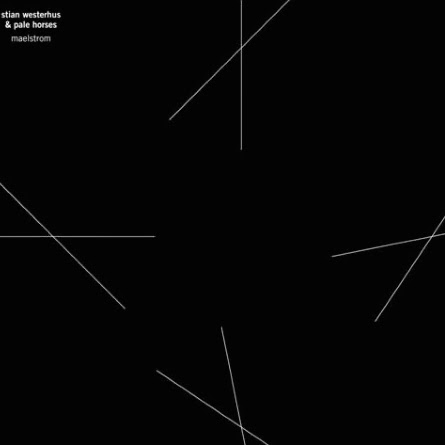“There is no death,” said Edgar Froese. “There is just a change of our cosmic address.” Froese, founder member of Tangerine Dream, changed his cosmic address in 2015. The band continue without him, so far. But when is a band no longer that band? Is it dependent on key members, or is a collective spirit more important?
Before Tangerine Dream, Froese was in a band called The Ones who used to play parties at Salvador Dalí’s house. His meetings with Dalí, he said, helped him to understand that “anything is possible in art”. He was inspired, too, by Karlheinz Stockhausen and Pink Floyd, before he became a pioneer of kosmische – a term he coined in the linernotes of Tangerine Dream’s 1971 album Alpha Centauri.
As well as inventing useful subgenre nomenclature, Froese wrote a lot of great music. In the past 51 years there have been around 30 members of Tangerine Dream, not including guests, and around 150 studio albums including about 30 soundtracks. In the mid 00s a fan collective called The Tangerine Tree attempted to catalogue all the releases – though it ceased to exist in 2006, perhaps overwhelmed by the task at hand. Even if you feel like you’re getting on top of the Tangerine Dream mountain, something will appear as if by magic. Like, say, Froese’s marvellous solo soundtrack to the 1982 cyberpunk noir Kamikaze ’89, starring (but not directed by) Rainer Werner Fassbinder shortly before his death. It’s a gargantuan task to listen to everything – Froese himself never managed it.
Much of the material played at the Union Chapel tonight comes from Quantum Gate, the album built by Thorsten Quaeschning, Hoshiko Yamane and Ulrich Schnauss from sketches begun by Froese before his death. The input of Schnauss in particular elevates the album beyond curio status. If anything is possible in art, perhaps this music itself transcends mere mortality. And there’s certainly a thrilling vitality to the show tonight. The three people on stage barely move, but the lightshow is a reminder of the hope that came with the electronic musicians of the 70s. It’s a similar kind of retrofuturist spectacle that Jean-Michel Jarre and Kraftwerk also do so well, and it does make you wonder if this kind of display is already a relic of the past, even as it pretty much screams “I am the future!”
A giant screen in the centre of the stage features a gaia-like image that pulses and undulates and changes colour with the music. To bask in the ambience projected from the purple planets with the Union Chapel as setting is to remember one of the purposes of churches in the first place: to create awe and amazement. There are also moments where it’s good to shut your eyes and allow the waves to wash over you.
The band power onwards, much as Froese would have done no doubt, aside from a peculiar couple of minutes where an image of Edgar is imposed on clouds and some tinkly neo-harp music plays. Thankfully we soon return to the realms of taste and decency again. Speaking of which, the way the ornamental computers and amplification are artfully built into the altar and pulpit is worthy of Frank Lloyd Wright. As the uncanny valley choirs chant along to the electronic spirituals, it’s as though these visual elements have existed in harmony for an eternity.
But can Tangerine Dream go on and on, without Froese, without anymore sketches or undeveloped works? It’s not an unprecedented scenario. The Sensational Alex Harvey Band continued as SAHB (Without Alex), releasing a second live album as late as 2006 (Alex died in 1982). Death is not an obstacle, and there are perhaps worse things to overcome (as the still-touring Glitter Band demonstrate). And then there are anomalies, like that time the Velvet Underground made an album without Lou Reed, John Cale or Sterling Morrison. Squeeze isn’t very good, but whether it’s a Velvet Underground album or not is open to debate.
In pop, complete lineup changes are perhaps more acceptable than in rock – although in metal, lead singers are often replaced. Pop lineup changes might raise the odd eyebrow, but the investment is sometime more in the product than the people who made it. Sugababes skilfully regenerated into an entirely different band, while the original members reformed and had to call themselves Mutya Keisha Siobhan (or MKS). Something similar happened with Bucks Fizz and David Van Day – a saga that was far too complicated for us to contemplate seriously – and Boney M have transmogrified over the years with no original crew (though Maizie Williams is now apparently back in their ranks).
It does seem arbitrary that one scene will tolerate shifting lineups while others can get all purist about it. Nile Rodgers tackled this the other day, in an online missive about his work with Chic following the death of his partner Bernard Edwards: “The CHIC Organization was the vessel created by Bernard Edwards and myself to perform our compositions. Think jazz groups or orchestras. When players move on or pass away, the NY Philharmonic or the Modern Jazz Quartet doesn’t change its name. The organization still performs their repertoire. Just as the director of a symphony orchestra it’s my responsibility to keep the quality of CHIC functioning at the highest level possible. In all my 40 years plus, I’ve never heard a journalist say The Mahavishnu Orchestra is not The Mahavishnu Orchestra when Billy Cobham left or when Jerry Goodman, Jean-Luc Ponty or Gayle Moran came in and out.”
Bands associated with the world of progressive rock have seen rogue formations continue like zombies without any of the original lifeforce. Gong, who are perhaps closest cousins to Tangerine Dream, continue to this day without founding members Daevid Allen and Gilli Smyth, who both left in 1975. Yes carried on with Billy Sherwood after the death of Chris Squire, who apparently anointed the American musician, though the induction of the original members into the Rock & Roll Hall Of Fame last year created extra frisson in the feud between the two parties.
Now nothing stands in T-Dream’s way except perhaps their own misgivings. But actually, why shouldn’t a band built on the premise that “anything is possible in art” continue beyond even the members that now guide the vessel? Limited companies, political parties and religions all mutate and reinvent themselves into eternity, it seems that bands can too.



